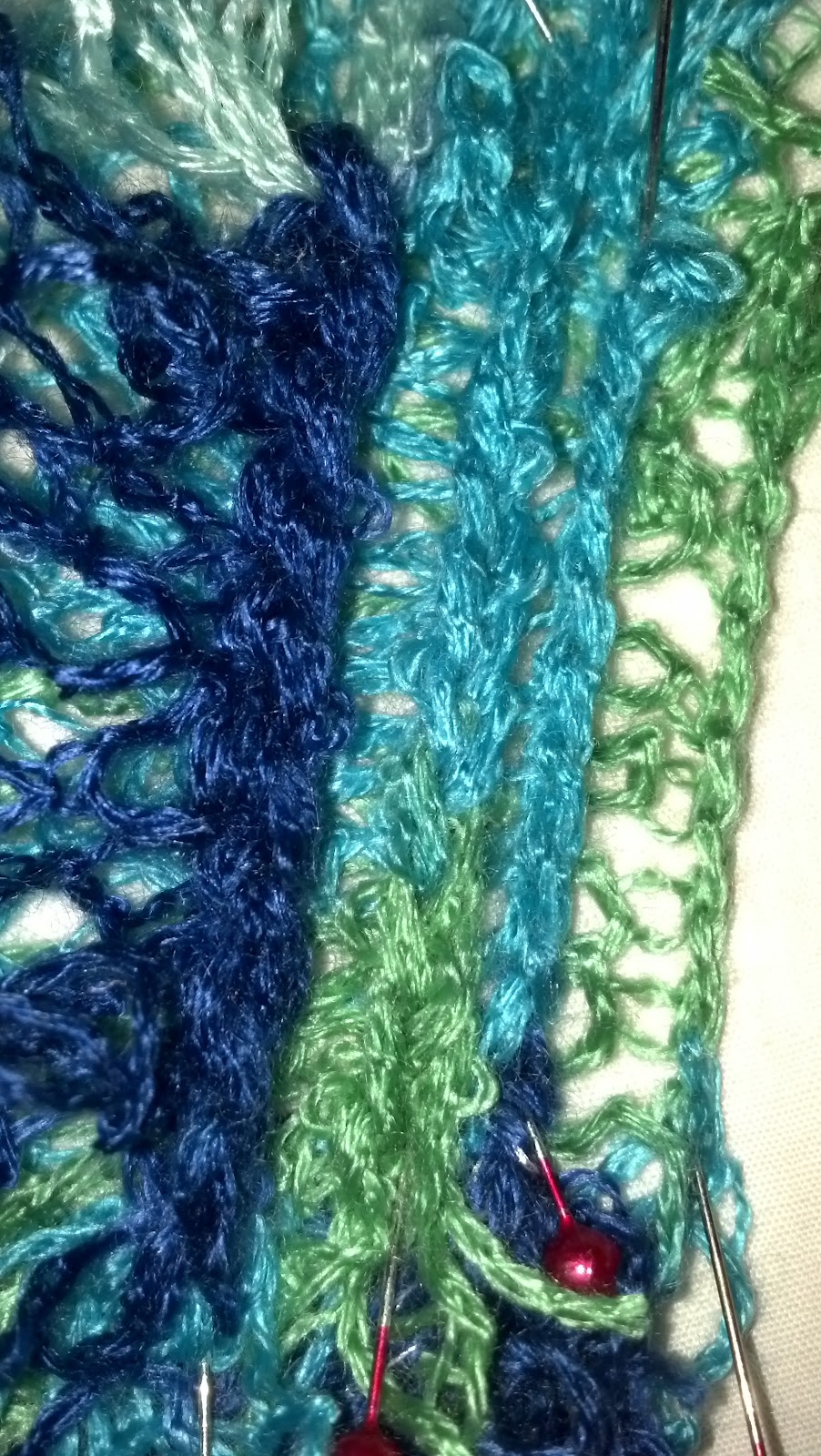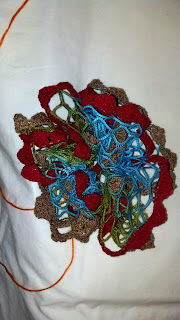In addition to the embellishments that already exist on many ruffle yarns, you can add your own twist by crocheting, tatting, or using another edging technique to add color, depth, fill, or other design to your mesh yarns.
 |
| Adding crocheted edgings to Trendsetter Yarns' Flamenco. |
For some, this may seem to be gilding the lily, but having two finished edges emphasizes a number of design options — such as double ruffles and mock hairpin lace.
Keep in mind include the size, weight, style, and fiber of your added edge. While the simple shell edges I've added above are in scale for Trendsetter Yarns'
Flamenco, the wool blend fingering yarn (Fox Brand
Velnette, a vintage crepe yarn from from my stash) is so heavy, comparatively, that it wants to collapse the mesh, and as a dry-clean only yarn, would shrink and full at a different rate than the mesh yarn were someone to stick it in the delicate cycle, ruining a finished garment.
 |
| Starbella Flashedged in size 30 crochet cotton |
More to scale is the simple single-crochet row of size 30 crochet cotton I added to the sample of
Starbella Flash in the second photo. While I've not put enough trim on that yarn to be decorative, I wanted to emphasize the unembellished border for another technique I'll be demonstrating shortly.


























